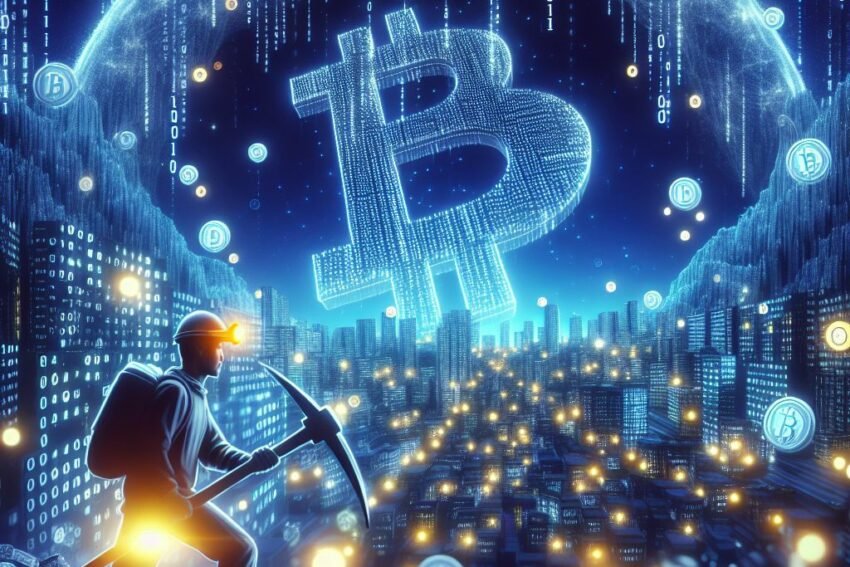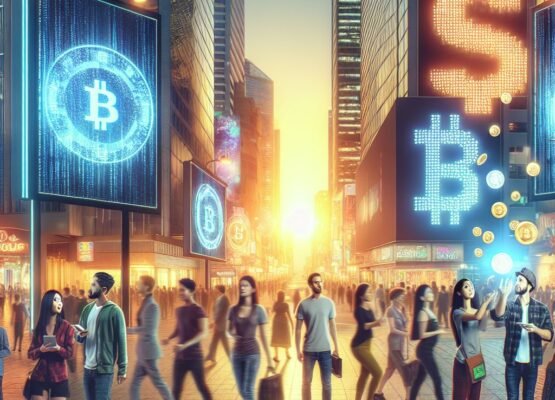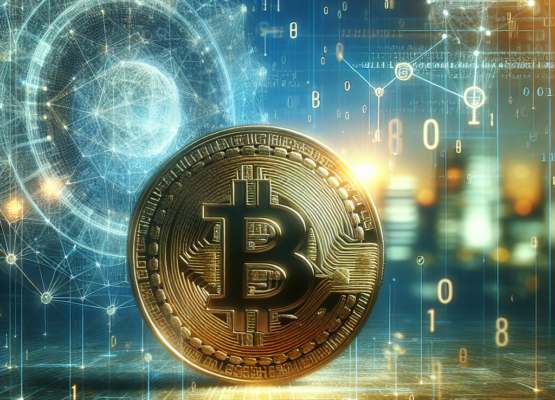Non-fungible tokens, or NFTs, have revolutionized digital ownership, leveraging blockchain to ensure authenticity. Unlike cryptocurrencies, NFTs are unique…
Non-fungible tokens, or NFTs, have taken the digital world by storm, introducing a whole new realm of possibilities for creators, collectors, and investors alike. To truly grasp their potential, we must first understand what sets them apart from other digital assets. At their core, NFTs are unique digital tokens that cannot be replaced or exchanged on a one-to-one basis, which is what ‘non-fungible’ means. This is in contrast to cryptocurrencies like Bitcoin, which are fungible and can be traded equally.
Most importantly, the technology that powers NFTs is blockchain, the same secure and transparent system behind many cryptocurrencies. Each NFT is encoded with the owner’s information and history, ensuring authenticity and proof of ownership. This is crucial because, in the digital world, where copying and pasting are as easy as a keyboard shortcut, establishing the originality of a digital asset is a game-changer.
Diving into the World of NFTs
Let’s dive in and explore these unique digital assets. Imagine you create a digital painting. In the past, that image could be copied endlessly, with no way to identify the original. Enter NFTs. When you turn your digital painting into an NFT, it’s like signing your artwork or putting a unique serial number on it. This doesn’t stop people from copying the image, but it does provide a way to prove which one is the original, the one that holds value.
What Are NFTs and How Do They Work?
An NFT is a digital asset that represents real-world objects like art, music, in-game items, and videos. They are bought and sold online, frequently with cryptocurrency, and they are generally encoded with the same underlying software as many cryptos. However, because they are non-fungible, each NFT has a distinct value, like a Van Gogh painting or a rare trading card. They can’t be exchanged on a like-for-like basis, which makes them perfect for representing ownership of unique items.
The Innovative Technology Behind NFTs
The bedrock of NFTs is blockchain technology, which creates a permanent, unchangeable record of the token’s history. This means that when you buy an NFT, the transaction is recorded, and everyone can see the transfer of ownership. The blockchain ensures that the record of ownership cannot be forged or altered, which is why NFTs are trusted as proof of ownership for digital assets.
The Allure of NFTs
Now, you might be wondering why anyone would pay real money for what essentially amounts to a digital certificate. The allure of NFTs lies in their ability to confer ownership of a digital item that is unique, scarce, and has the potential to increase in value over time. It’s a bit like collecting first-edition books or rare stamps, but for the digital age.
Why NFTs Are More Than Just Digital Art
While digital art is a significant part of the NFT craze, these tokens are about so much more. They can represent anything unique that can be stored digitally and needs proof of ownership. This includes things like:
- Virtual real estate in online worlds
- Exclusive use of a cryptocurrency wallet name
- Ownership records for physical assets
- Collectible sports cards
- Unique in-game items and skins
- Music and video clips
Therefore, NFTs have the potential to revolutionize the way we think about ownership and value in the digital space.
Real World Examples: From Beeple to NBA Top Shots
One of the most famous examples of NFTs in action is the sale of a digital collage by the artist known as Beeple, which sold at Christie’s for a staggering $69 million. Another example is NBA Top Shot, a platform where fans can buy, sell, and trade officially licensed NBA collectible highlights. These examples illustrate the wide range of possibilities that NFTs bring to the table.
“NFTs represent the next frontier in the evolution of digital ownership and creativity. They enable artists and creators to monetize their work in ways that were previously impossible.” – Beeple, after his record-breaking NFT sale.
Investing in NFTs: The Basics
For those looking to invest in NFTs, it’s crucial to start with the basics. Before diving in, you should have a good grasp of what NFTs are, how they work, and why they’re valuable. It’s also important to understand the risks involved, including market volatility and the potential for loss, just as with any investment.
How to Start Your NFT Investment Journey
If you’re ready to start your journey with NFTs, here’s what you need to do: first, understand the basics of what NFTs are by reading this comprehensive guide on NFTs, explained.
- Research: Learn as much as you can about NFTs and the market.
- Choose a marketplace: Find a reputable NFT marketplace to browse available assets.
- Set up a digital wallet: You’ll need a wallet compatible with the cryptocurrency used in the marketplace.
- Start small: Begin with a modest investment to get a feel for the market.
Understanding the Market: Rarity, Demand, and Price Factors
When it comes to NFTs, several factors can affect their value:
- Rarity: The more scarce an NFT is, the more valuable it can be.
- Demand: High demand can drive up prices, just like in traditional markets.
- Creator: NFTs created by well-known artists or brands may have higher value.
By considering these factors, you can make more informed decisions about which NFTs to invest in.
Finding Value in a Volatile Market
The world of NFTs is exciting, but it’s also new and can be quite volatile. This means that prices can fluctuate widely. Finding value in such a market requires patience, a keen eye, and an understanding of what drives the worth of digital assets. It’s not just about the buzz; it’s about the underlying value of the NFT, whether it’s a piece of art, a collectible, or a utility token for a digital experience.
Just like in traditional investing, doing your homework is key. Look for NFTs that have a solid reason for their value, such as those by established artists, those that offer some utility, or those that are part of a growing community. Remember, the value is not just in the NFT itself but also in its potential for future growth and the ecosystem it belongs to.
Platforms to Watch: OpenSea, Rarible, and Beyond
When it comes to buying and selling NFTs, the platform you choose is crucial. OpenSea is the largest and most popular NFT marketplace, offering a vast array of digital assets. Rarible is another popular choice, with a strong focus on art and a democratic, community-driven approach to governance. Beyond these, there are platforms like Foundation, which caters to more exclusive, high-end art, and NBA Top Shot for sports enthusiasts. Each platform has its unique features and community, so it’s important to find the one that fits your investment style and interests.
The Unique Features of NFTs
NFTs are revolutionizing the way we think about digital ownership and value. Their unique features set them apart from traditional digital assets and are the key to their investment potential.
Indivisibility: The Power of One
One of the fundamental characteristics of NFTs is their indivisibility. Unlike cryptocurrencies, which can be divided into smaller units, an NFT is whole and cannot be broken down. This means when you buy an NFT, you’re buying the entire asset, not just a part of it. This indivisibility reinforces the concept of uniqueness and ownership of a single, non-replicable asset.
Proving Ownership: Blockchain at Its Best
The blockchain technology underpinning NFTs provides an immutable record of ownership. This is crucial because it ensures that once you buy an NFT, your ownership is recorded on the blockchain for everyone to see and cannot be disputed. This level of transparency is unparalleled in the digital world and is what makes NFTs so trustworthy as a form of digital asset.
Authenticity and Rarity: Why NFTs Can Be Priceless
Authenticity and rarity are at the heart of what makes NFTs valuable. Since each NFT is unique and cannot be replicated, they can become incredibly rare, especially if they are created by a well-known artist or are part of a limited series. This rarity can make NFTs extremely valuable, as seen with the sale of Beeple’s artwork. Authenticity, guaranteed by blockchain, ensures that the asset you own is the original, adding to its value.
Interoperability: A New Digital Ecosystem
Interoperability is another unique feature of NFTs, allowing them to be used across different applications and ecosystems. For example, a virtual piece of land purchased on one platform might be accessible and usable in a different virtual world. This ability to operate across various environments adds to the utility and, therefore, the value of NFTs.
The Risks of NFT Investment
While the potential for high returns is significant, investing in NFTs comes with its own set of risks. Market volatility is a reality, and the value of NFTs can see dramatic ups and downs. It’s essential to be aware of these risks and to only invest money that you can afford to lose.
Understanding Volatility and NFT Valuation Challenges
Valuing NFTs can be challenging because their worth is subjective and based on factors like rarity, demand, and the creator’s reputation. Unlike stocks, where there are clear financials to analyze, NFT valuation is more akin to valuing art or collectibles, which can be highly speculative. As such, prices can be unpredictable, and understanding this volatility is key to making informed investment decisions.
- Know that NFT markets can be highly speculative and prices can fluctuate widely.
- Do your research to understand the factors that contribute to an NFT’s value.
- Be prepared for the possibility of loss, just as with any investment.
The Dark Side of NFTs: Avoiding Scams and Frauds
As with any booming market, the world of NFTs is not without its scams and frauds. It’s crucial to be vigilant and do thorough research before making any purchases. Look for red flags like lack of verifiable information on the creator, unrealistic promises of returns, or NFTs that seem to be blatant copies of other works. Stick to reputable platforms and communities, and always ensure you’re dealing with legitimate sellers and assets.
Maximizing Your NFT Investment
To maximize your NFT investment, consider the following strategies:
- Focus on long-term value rather than short-term hype.
- Look for NFTs with utility that will provide ongoing value beyond just ownership.
- Diversify your portfolio to spread risk across different types of NFTs.
- Stay informed about the latest trends and shifts in the NFT space.
By following these strategies, you can better position yourself to take advantage of the opportunities in the NFT market while mitigating the risks.
Strategies to Boost your NFT Portfolio’s Value
When you’re looking to boost the value of your NFT portfolio, think like an art curator or a collector of rare items. You want to seek out pieces that have a story, a rarity, or a potential for increased attention in the future. Here are some strategies to consider:
- Research the artist or creator behind the NFT. A strong reputation can significantly increase an NFT’s value.
- Look for NFTs that offer some form of utility or benefit, like access to exclusive events or content.
- Keep an eye on emerging trends and technologies that might make certain NFTs more desirable.
- Consider the long-term potential of the NFT. Will it still be relevant and sought after in the future?
Remember, the NFT market is still young, and there is a lot we’re learning every day. Stay curious and cautious, and always keep an eye on the horizon for the next big thing.
Future Trends: NFTs in Gaming, Music, and More
Looking ahead, NFTs are set to revolutionize various industries. In gaming, NFTs could represent unique in-game items or characters, providing players with true ownership of their digital assets. In music, artists could release limited edition albums or experiences as NFTs, offering fans a new way to connect and support their favorite musicians.
Another exciting trend is the potential for NFTs to represent fractions of physical assets, like real estate or art. This could open up investment opportunities to a wider audience, democratizing access to high-value investments that were previously out of reach for many.
The Future of NFTs and Digital Ownership
The future of NFTs is likely to be deeply intertwined with the concept of digital ownership. As we spend more time in virtual spaces and place more value on digital experiences, NFTs will become increasingly important. They’re not just a trend; they’re a shift in how we perceive and value digital property.
NFTs and the Evolution of Intellectual Property
NFTs are also set to impact the world of intellectual property. By tokenizing their work, creators can maintain control over how their content is used and shared online. This could lead to new revenue models and ways for artists to engage with their audiences, all while protecting their intellectual property rights.
Predicting the Next Big Wave in NFTs
As with any emerging technology, predicting the next big wave in NFTs is challenging. However, we can expect to see further integration with augmented reality (AR) and virtual reality (VR), leading to new forms of interactive art and experiences. Social tokens, which represent a stake in a community or a person’s brand, could also become more prominent, giving rise to new ways of connecting and creating value together.
Your Next Steps in the NFT Market
If you’re ready to take the plunge into the world of NFTs, here are some key steps to get you started:
Key Considerations Before Purchasing an NFT
Before you make your first NFT purchase, consider the following:
- Do your due diligence. Research the NFT and its creator to ensure authenticity.
- Understand the marketplace. Different platforms have different fees and features.
- Be aware of the environmental impact. Some blockchains consume a lot of energy.
- Only invest what you can afford to lose. Like any investment, NFTs come with risks.
Building a Diverse Digital Asset Portfolio
When building your digital asset portfolio, diversification is key. Don’t put all your eggs in one basket. Instead, spread your investments across different types of NFTs and creators. This can help mitigate risk and give you exposure to different segments of the market.
- Research is critical. Understand the NFT’s history and potential future value.
- Diversify your investments across different types of NFTs.
- Consider the long-term potential and utility of the NFTs you purchase.
- Stay informed about market trends and emerging technologies.
- Be mindful of the environmental impact of blockchain technology.
- Invest responsibly and never spend more than you can afford to lose.




